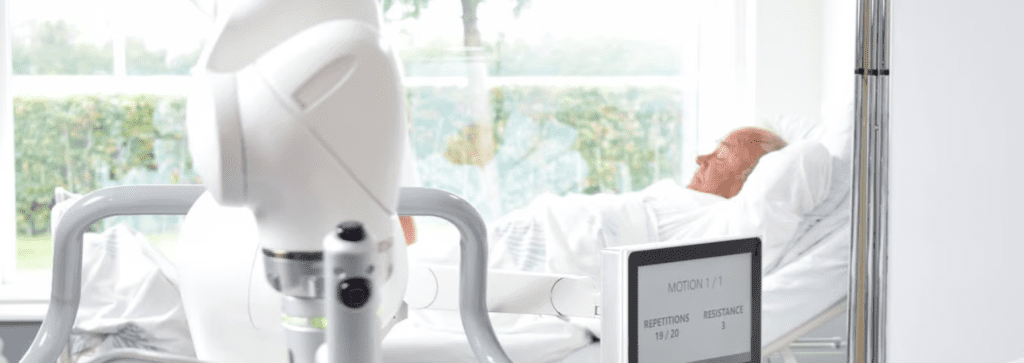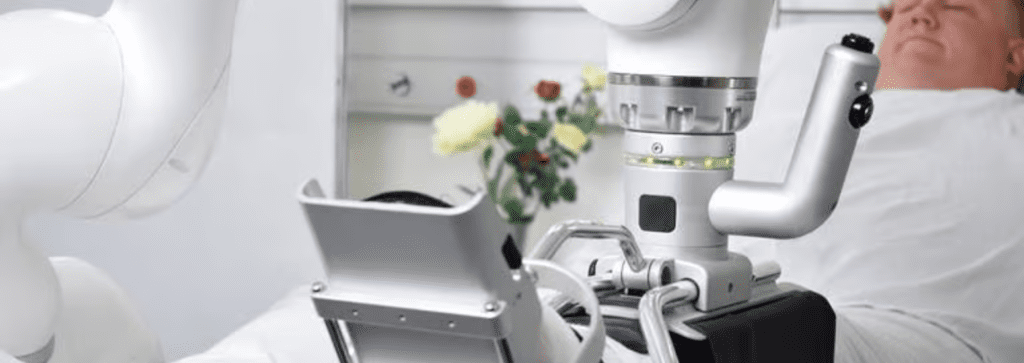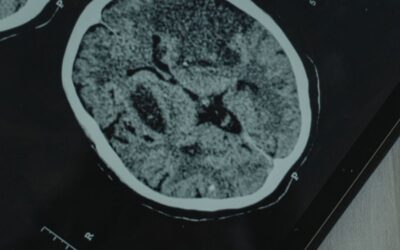Rehabilitation robots used in physical therapy with ROBERT® require intensive effort as they provide improved conditions for patient recovery and healthcare professional support. The robot offers both active resistance and assistance during mobilisation, enhancing the conditions for patient recovery and healthcare professional support.
Robot-assisted therapy is beneficial in stroke rehabilitation as it can provide high-dosage and high-intensity training, which is valuable for individuals with motor disorders resulting from stroke or spinal cord disease. Lower limb exoskeleton types are among the robotic devices used for motor rehabilitation.
Rehabilitation from stroke with robot-assisted therapy
We must start rehabilitation exercises to help patients get out of bed immediately.
Following surgery or a stroke, engaging in intensive movement of the patient’s joints and muscles over an extended period is often medically advantageous to promote better healing. Without this mobilisation, complications such as reduced mobility may develop later on.
Robotic Treatment

How can ROBERT® benefit patients, healthcare professionals, and institutions?
Healthcare Professionals
Limit heavy and repetitive lifting
- Allocate resources to other areas of treatment
- Streamline manoeuvring and user-friendly interface
Patients
Promote early mobilisation and enhance the efficiency of treatment
- Prevent soft tissue contractures and pressure ulcers
- Reduce the risk of blood clots and pneumonia
- Minimize muscle atrophy and neuropathic impact
Medical Centres
Deliver comprehensive care without raising staffing expenses
- Quicker recuperation and resumption of daily activities
- Reduced duration of hospital stays
Rehab Robot

ROBERT® – The Rehabilitation Robots in physical therapy help patients by offering personalised training to increase mobility.
In stroke rehabilitation, robot-assisted therapy can also enhance patient engagement during repetitive physical tasks, which may be challenging to achieve with traditional exercise therapy.
The Robot: ROBERT® offers advanced neuro-robotic rehabilitation technologies to improve the well-being of patients worldwide. ROBERT® is designed for easy movement from one room to another, allowing the patient to remain in bed and focus on therapy.
Initiating rehabilitation as early as the first day of the patient’s hospitalisation is crucial, even if the patient cannot get out of bed independently. Intensifying rehabilitation efforts also relieves healthcare professionals of repeated heavy lifting.
The therapy begins with a safety test being conducted by the robot.
The patient’s lower leg is connected to the brace, and Robert is positioned on the patient’s legs as they are rolled up to the bedside in preparation for therapy.
Patients receive high-quality training, which enhances their rehabilitation during their stay in the intensive care unit.
After healthcare professionals instruct the robot to conduct a training session, it handles the heavy and repetitive lifting involved in rehabilitation, creating a better working environment for physiotherapists assisting the patient.
Rehabilitation robots used in physical therapy offer improved conditions for patients and healthcare professionals during rehabilitation. ROBERT® aids in the rehabilitation of patients who are immobilised.
Get in touch with ROBERT® at https://rehabmodalities.com/ to schedule a free demo.



